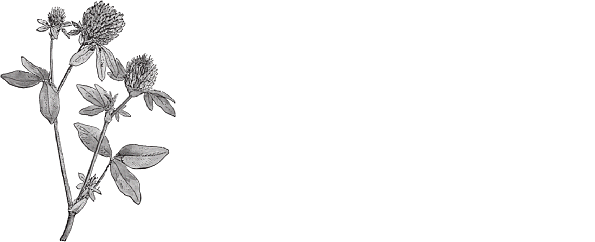WEDNESDAY, DAY 3
DRUGS AND ALTERNATIVE TREATMENTS
Red Clover
Trifolium pratense, commonly known as red clover, is an herb that grows in Europe, Asia, and North America and belongs to the legume family, a group that also includes peas, alfalfa, peanuts, and beans. Red clover contains isoflavones— compounds with properties similar to those of the female hormone estrogen—and is used to treat menopausal symptoms, breast pain associated with menstrual cycles, high cholesterol, and osteoporosis

Historically, the flowering tops of the red clover plant have been used to treat cancer and respiratory problems such as asthma, bronchitis, and whooping cough. It has also been used as a folk remedy for skin problems. Today, researchers believe red clover’s estrogen-like properties may be helpful in treating hormonal conditions such as menstrual pain and menopause. However, there is also concern about the safety of isoflavones, as they appear to contribute to the growth of certain types of female cancer in the same way that estrogen does.
Red clover also provides many nutrients, including vitamin C, niacin, and calcium. Because of its high isoflavone content, it’s suggested that red clover may also reduce hot flashes in menopausal women, although the largest study showed no effect. Preliminary evidence has shown that an extract of the plant may slow bone loss and may even boost bone mineral density to protect against osteoporosis.
ADDITIONAL FACTS
- Red clover is native to Europe and Asia and has been naturalized to grow in the United States. It is frequently used for grazing cattle and other animals.
- Traditionally, red clover was thought to improve circulation, cleanse the liver, and purify the blood by ridding the body of excess fluid and helping clear the lungs of mucus.
- Side effects of red clover are usually mild and include headache, nausea, and rash. However, infertility has been noted in grazing animals that consume large amounts of the plant.